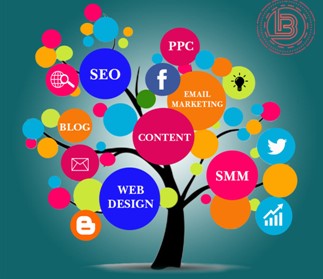In today's digital age, having a strong online presence is crucial for businesses to succeed.…

The Evolution and Impact of Office Cubicles on Modern Workspaces
Introduction
The concept of office cubicles has been a central element in the modern workplace for decades. These partitioned workspaces have evolved significantly since their inception, reflecting changes in organizational culture, employee needs, and technological advancements. In this article, we will delve into the history of office cubicles, their impact on productivity and workplace dynamics, and the future of office design in a post-pandemic world.
A Brief History of Office Cubicles
The story of office cubicles begins in the early 1960s when designer Robert Propst introduced the “Action Office” system at the furniture manufacturer Herman Miller. Propst’s original vision was to create a flexible and versatile workspace that would enhance individual productivity and promote collaboration. The Action Office system featured modular, panel-based workstations with adjustable components, allowing employees to customize their work environment to suit their needs.
The Impact of Cubicles on Productivity
The introduction of office cubicles had a profound impact on the modern workplace, both positive and negative. Let’s explore some of the key aspects of this impact.
Increased Privacy: Office cubicles offered employees a degree of privacy that open-plan offices couldn’t provide. This sense of privacy was especially important for tasks that required concentration and focus.
Negative Stigma: Over time, the cubicle became synonymous with a dull and uninspiring work environment, contributing to a negative stigma associated with office life.
The Shift Toward Open Offices
In response to the limitations of cubicles, many organizations embraced the concept of open-plan offices in the late 20th century. These layouts aimed to foster collaboration, communication, and a sense of community among employees. However, open offices brought their own set of challenges, including increased noise levels, reduced privacy, and difficulties in focusing on tasks that required concentration.
Office Cubicles in the Digital Age
As technology continued to evolve, so did the role of office cubicles. The advent of computers and the internet transformed the way work was done, making it possible for employees to work remotely or in more flexible arrangements. Cubicles adapted to accommodate the changing needs of the workforce. Here are some ways in which cubicles evolved in the digital age:
Ergonomics: The design of cubicles began to prioritize ergonomics, with adjustable desks and chairs to promote comfort and reduce physical strain.
Connectivity: Cubicles incorporated power outlets and data ports to support the increasing reliance on electronic devices.
Collaboration Spaces: Many organizations introduced collaborative spaces within cubicle layouts to balance the need for focused work with opportunities for teamwork.
Customization: Cubicles became more customizable, allowing employees to personalize their workspace while maintaining a degree of consistency within the office.
The Pandemic and the Future of Office Cubicles
The COVID-19 pandemic brought about a seismic shift in how and where work is conducted. With remote work becoming the norm for many, the role of the traditional office cubicle came into question. However, it’s important to note that while remote work has its advantages, it also has its limitations, including issues related to social isolation, lack of work-life balance, and difficulties in maintaining company culture.
As organizations adapt to the new normal, the future of office cubicles is likely to be shaped by a more balanced approach that combines the benefits of remote work with the advantages of in-person collaboration. Here are some potential trends in office cubicle design post-pandemic:
Flexible Workspaces: Cubicles may become even more flexible, allowing for hot-desking and easy reconfiguration to accommodate changing needs.
Hybrid Work Models: Organizations may adopt hybrid work models that combine remote work with regular office days. Cubicles will need to support this by providing the infrastructure for both in-office and remote work.
Well-being and Health: The design of office cubicles may focus on promoting employee well-being and health, incorporating elements like natural lighting, air quality control, and basophilic design.
Technology Integration: Integration of advanced technology, such as virtual reality and augmented reality, into office cubicles may enhance collaboration and productivity.
Personalization: Cubicles will continue to offer personalization options to make employees feel more comfortable and connected to their workspace.
Conclusion
The history of office cubicles is a story of adaptation and evolution. From their inception as a means to enhance productivity and privacy to their role in accommodating the changing needs of the digital age, cubicles have played a significant part in shaping the modern workplace. While they have faced criticism and challenges, they remain a relevant and adaptable component of office design.
As organizations navigate the post-pandemic world, the future of office cubicles will likely be characterized by flexibility, technology integration, and a renewed focus on employee well-being. Ultimately, the key to the successful use of office cubicles lies in striking a balance between individual productivity and the need for collaboration and community in the workplace.




This Post Has 0 Comments